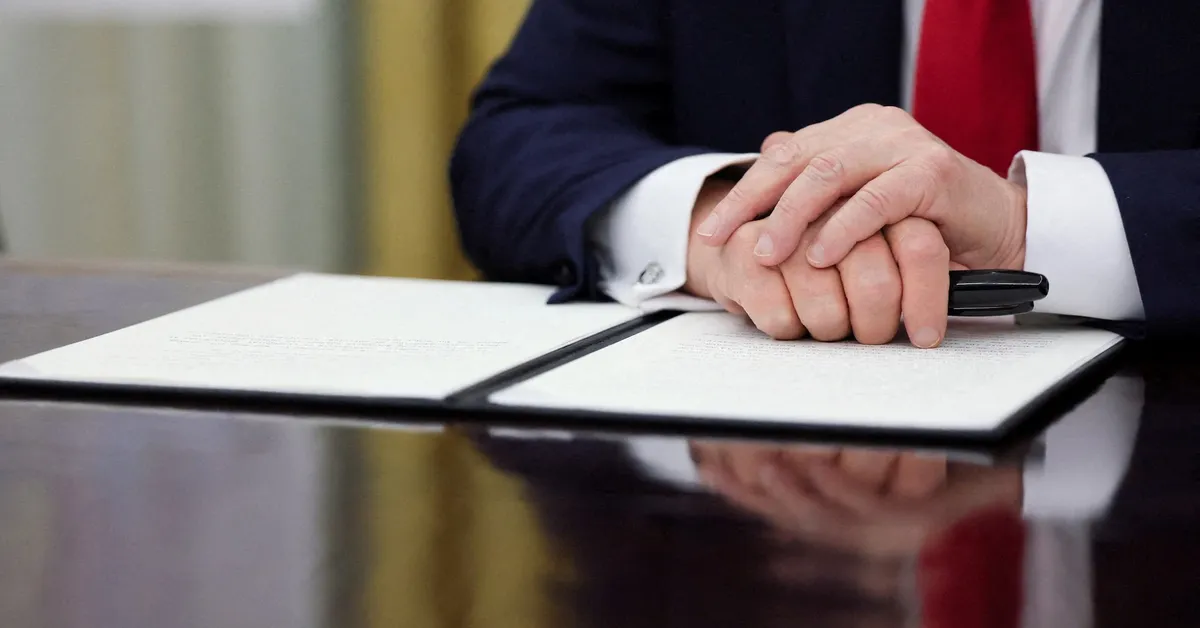
On April 2, 2023, global investors are poised for a significant announcement regarding tariffs from the Trump administration. As the financial markets remain on edge, there is a palpable sense of uncertainty surrounding the details of this impending announcement. U.S. President Donald Trump has branded April 2 as Liberation Day, signaling plans to impose a series of new tariffs that could fundamentally alter the global trading landscape.
The implications of these tariffs extend far beyond mere trade; they have profound effects on corporate earnings, global growth, inflation, and the Federal Reserve's interest rate policy. At the beginning of the year, investors were optimistic about the pro-growth policies anticipated from the Trump administration. However, a series of tariff-related headlines have sparked concern and unease among financial circles.
As the long-awaited announcement approaches, investors are acutely aware that it could be pivotal for the short-term trajectory of global financial markets. Yet, uncertainty looms over how market prices will react and what subsequent actions may follow, as negotiations could be lengthy and complex. Steve Sosnick, chief strategist at Interactive Brokers, remarked, "I can't recall a situation where the stakes were this high and yet the outcome was so unpredictable." He emphasized that the devil is in the details, and currently, those details remain elusive.
On Tuesday, the White House confirmed that Trump would impose new tariffs on Wednesday. However, specifics regarding the size and scope of these trade barriers, which have raised concerns among businesses, consumers, and investors about an escalating global trade war, were not disclosed. Karoline Leavitt, a White House spokesperson, stated that reciprocal tariffs would be implemented against countries imposing duties on U.S. goods, while a significant 25% tariff on auto imports is set to take effect on April 3.
The lack of clarity regarding whether there will be a uniform tariff rate or a more fragmented approach complicates efforts to model the ultimate impact of these tariffs on earnings, economic growth, and inflation. Sonu Varghese, global macro strategist at Carson Group, expressed concerns that the market might not receive a clear figure, saying, "Ideally, we just get one number and then we can figure out the downstream impact."
Wednesday's announcement is particularly critical, especially after the S&P 500 index confirmed a correction—a drop of 10% from a recent high in mid-March. Currently, the index is down approximately 8% from its record high in February. Sosnick warned, "We are at a very tenuous spot, being at the bottom of a corrective trading range ... that leaves us poised for either a very sharp bounce or a scary breakdown."
Mark Spindel, chief investment officer at Potomac River Capital LLC, noted that the market is "holding its breath," anticipating that the so-called fear gauge could rise toward 30, a level indicative of high risk aversion. Traders in the options market are preparing for an estimated 1.3% swing in the S&P 500 on the announcement day. Meanwhile, European markets opened lower, reflecting widespread apprehension.
The tariff announcement could also lead to significant fluctuations in the dollar, euro, and safe-haven gold. Recent data indicates that U.S. manufacturing contracted in March after two months of growth, while inflation at the factory level surged to its highest point in nearly three years amid rising concerns over import tariffs. Furthermore, sluggish consumer spending figures have raised fears of subdued economic growth alongside rising inflation, potentially placing the Federal Reserve in a difficult position.
Anthony Saglimbene, chief market strategist at Ameriprise Financial, cautioned that the risk lies in Wednesday's announcement failing to provide clarity on tariffs. He noted, "The market to some extent has discounted the cumulative negative effect of tariffs on potential economic growth and corporate profitability." A negative market response could occur if the details of the tariffs leave numerous questions unanswered.
In light of the unpredictability surrounding Wednesday's news, analysts recommend that investors avoid concentrating their assets in one area. Jack Ablin, chief investment officer at Cresset Capital, advised, "The bottom line is in the face of uncertainty that's flirting at levels that we haven't seen since the pandemic or the financial crisis, you need to be diversified."